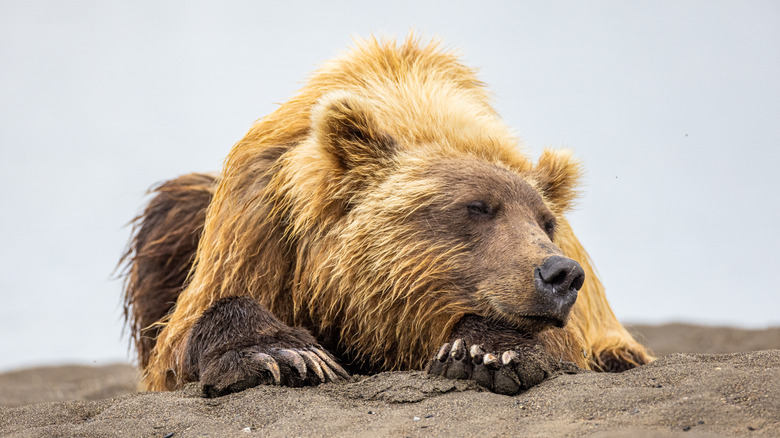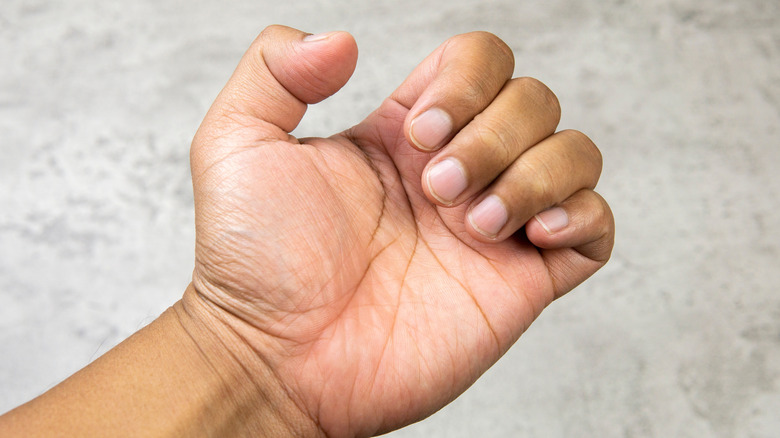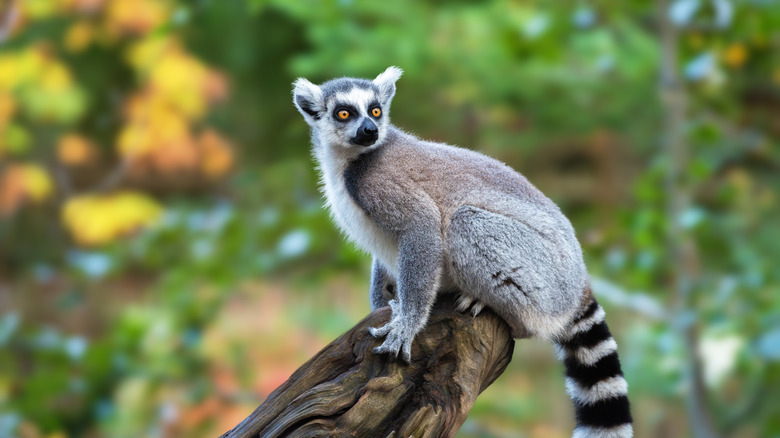The Unexpected Origins Of Human Fingernails - From Claws To Nails
Human fingernails serve many purposes. This strong coating on our fingertips helps protect our fingers during gripping, which also shields us from infections since we're less at risk for injury. They additionally aid with fine motor movements like scratching, separating, and picking up objects. They also have nerves under them, allowing them to play a role in our sense of touch.
Our fingernails can even tell us important things about our health. For example, the appearance of our fingernails could be a sign of kidney disease or of not getting enough protein. And, beyond these more pragmatic uses of our fingernails, many enjoy using them as a form of self-expression and beauty enhancement, heading to the nail salon on a regular basis for a manicure (here's how to tell if your nail salon is safe).
Yet, despite the great utility of our fingernails, our ancient ancestors surprisingly did not have them. Instead, they had claws. So, how did claws end up evolving into fingernails?
How claws evolved into fingernails
Claws served important functions in early mammals, aiding them in climbing, digging, and grasping. Over time, as some mammals — particularly primates — adapted to life in the treetops, the shape and function of claws began to change. Sharp claws made it difficult to grasp small, flexible branches, so flatter, broader fingertips became more advantageous. This shift supported the evolution of nails — flattened, keratin-based structures that offered protection and stability without interfering with fine motor movements.
Nails also played a key role in the development of precise gripping abilities. By reinforcing the tips of the fingers, they allowed early primates to handle objects more effectively. As human ancestors transitioned from arboreal life to more terrestrial environments, the ability to grasp and manipulate tools became increasingly important. Broad fingertips supported by nails enabled greater control, helping early humans to shape tools and interact with their surroundings in more complex ways, laying the groundwork for the development of advanced motor skills.
Understanding the structure of fingernails
Fingernails are made up of three main parts: the nail plate (the hard part you can see), the nail bed underneath, and the skin around the nail. The nail plate is made of special skin cells that produce keratin, a strong, clear protein that gives nails their firmness. The pink color of your nails comes from blood vessels under the nail plate, while the tips look white because there are no vessels there. Near the base of your nail, you might notice a pale half-moon shape called the lunula (here's what those half-moons under your fingernails can tell you about your health). This is part of the nail root, which sits under the skin and includes the nail matrix, the area where new nail cells are made. Most of the nail is visible, but about 20% is hidden beneath the skin.
Under the nail plate is the nail bed, a soft, sensitive area filled with nerves, blood vessels, and pigment-producing cells. It stretches from the nail root to just under the tip of your nail. On the sides, the nail is bordered by folds of skin, and at the base, there's a small ridge of skin called the nail fold. The cuticle—the thin strip of tissue at the bottom of the nail—helps seal the gap between your nail and skin, protecting against bacteria and infection. Fingernails grow about 3 millimeters per month on average, but this can slow down with age or poor circulation. If you lose a fingernail, it can take four to six months to grow back completely (here's what it means when your fingernails won't grow).
How fingernails compare to claws
Although nails and claws share a common evolutionary origin, a 1985 article in the Journal of Human Evolution explains that they differ significantly in structure, function, and distribution. While claws are widespread among mammals, nails are largely unique to primates, with only a few exceptions in some marsupials. Nails evolved in connection with other primate traits — especially opposable thumbs and toes — which allowed the hands and feet to become specialized for grasping and manipulating objects. As digits became more flexible and the fingertip bones (phalanges) lengthened and splayed out to support broad, sensitive pads, claws flattened and widened into nails to match these new structural needs.
Unlike claws, which are thick and curved for digging, climbing, or defense, nails are thinner and better suited for precision. The dense, deep layer that gives claws their strength became reduced or was lost entirely during the transition to nails, possibly surviving only as the thin ventral plate found beneath the human nail. Additionally, the tendons that once enabled claw movement became vestigial or disappeared altogether in digits with nails, reflecting the shift from power to fine motor control.
Some early primates had both claws and nails
A 2018 study published in the Journal of Human Evolution challenges long-held assumptions about the early evolution of primate fingernails. Researchers examining fossils from several early primate species — including Teilhardina brandti, one of the oldest known primates — found that these ancient animals didn't have nails on all their digits as previously thought. Instead, they had a mix: flat nails on most fingers and specialized grooming claws on others. This discovery suggests that the transition from claws to nails was not a clean break but a gradual, complex process.
The study proposes that grooming claws — which are still found in modern lemurs, lorises, and tarsiers — may have played a vital role in early primate survival. Thick body fur could harbor parasites, making grooming claws a useful evolutionary tool for hygiene. Interestingly, some monkey species that live more solitary lives, such as titi and owl monkeys, have even re-evolved grooming claws, possibly compensating for the lack of social grooming found in group-living primates. The findings underscore how seemingly small anatomical details can offer big insights into behavior, social structures, and evolutionary pressures among our earliest ancestors.
How might fingernails evolve in the future?
While it's impossible to know exactly what direction human evolution will take in the future, it's clearly possible that our fingernails could morph into another, more useful form; become vestigial, no longer serving any purpose; or disappear altogether. It all depends on the process of natural selection and what traits remain advantageous to our survival in our future environment.
Could fingernails even revert to being claws? While it's not unheard of, as the titi and owl monkey can attest, there would need to be some sort of evolutionary pressures that would encourage it, similar to how these animals may have re-evolved claws as a way to make up for a lack of grooming partners. In short, unless future environments favor claw-like adaptations, our nails will likely stay as they are: optimized for precision and touch, not for digging, climbing, or fending off predators.





